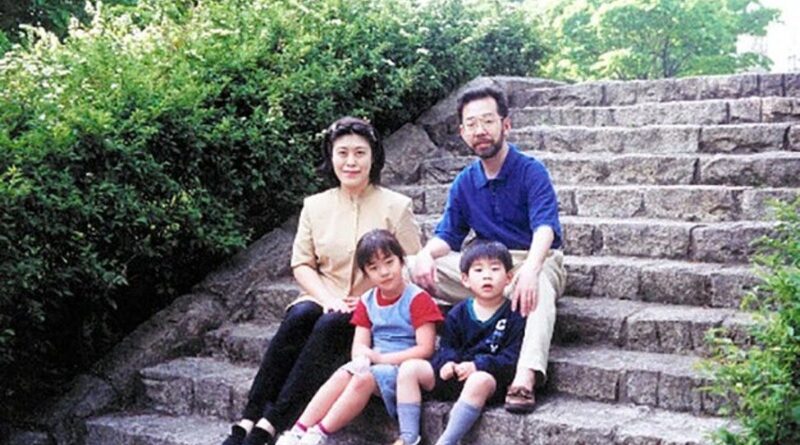The Setagaya Family Murders in Kamisoshigaya Japan
On the night between December 30 and 31, 2000, the quiet residential streets of Kamisoshigaya—a subarea within Tokyo’s Setagaya Ward—became the scene of one of Japan’s most brutal and baffling crimes. This horrific incident, widely known as the Setagaya Family Murders, involved the callous killing of an entire family in a suburban home. The seemingly ordinary household, once a safe haven, transformed into a macabre crime scene that would haunt the nation for decades.
The crime unfolded in a manner that defied conventional logic. In a country celebrated for its low crime rate and immaculate public order, the savagery of the murders shocked not only law enforcement but the general public as well. The incident not only brought grief to the bereaved relatives but also shook the collective confidence in societal security, forcing new discussions on investigative techniques and forensic methodologies.
A Family Torn Apart
The victims were the Miyazawa family, consisting of four beloved members. The patriarch, Mikio Miyazawa (44), a dedicated office worker employed by a British marketing company, and his wife, Yasuko Miyazawa (41), who worked as a home tutor, shared a modest yet comfortable life with their two young children—Niina, an 8-year-old girl, and Rei, a 6-year-old boy. On that fateful night, each of them would be violently taken from their promising future. These weren’t merely victims of a random criminal act; they were a family whose lives had been abruptly and ruthlessly cut short, leaving unanswered questions that continue to ripple through the community.
The Calm Before the Storm
In the days leading up to the murders, the Miyazawa household appeared to be just another cheerful family home. They had been preparing for New Year’s celebrations—a time marked by hope, renewal, and the promise of fresh beginnings in Japanese culture. December 30 was a significant day, as many families in Japan meticulously clean their homes and complete last-minute preparations for the coming year. Amid this atmosphere of anticipation, the Miyazawas were unaware of the impending nightmare.
Early reports indicate that the family had spent the evening engaging in routine activities: sharing dinner, watching television, and perhaps discussing their plans for the new year. There is no indication of forewarning or unusual behavior on that night, which made the subsequent violence all the more shocking. Instead of the warm and comforting environment expected during this period, the quiet home became the stage for an execution-style massacre.
The Intrusion and the Brutal Attack
Sometime after 11 p.m., the home was infiltrated by an unknown assailant. While many theories have been proposed regarding how the intruder gained entry, the most widely accepted account suggests that the killer accessed the house by entering through a window on the second floor—specifically, a bathroom window that overlooked the nearby park. The window’s screen was found damaged, hinting at either forced entry or premeditated removal to facilitate access.
Once inside, the murderer executed a series of horrifying actions with apparent precision yet disturbing incongruity. The sequence of events began in the children’s quarters; Rei, the youngest member, is believed to have been strangled—an act that might have been chosen for its relative quietness but ultimately left him as a tragic emblem of innocence lost. Soon afterward, the killer made his way to the ground floor where he attacked Mikio Miyazawa, inflicting multiple stab wounds with a sashimi knife. In a perplexing turn of events, part of the knife’s blade was found embedded in Mikio’s head, suggesting that the weapon broke during the struggle.
The brutal violence did not stop there. The killer proceeded to the second floor to confront Yasuko and Niina, utilizing a second knife—likely a santoku—to finish his work. Both were struck with a ferocity that left little room for medical recovery, and the tragedy deepened with the systematic elimination of any hope for survival.
The Baffling Behavior of the Killer
One of the most mystifying aspects of the Setagaya Family Murders is not solely the act of killing, but what the intruder did after the murders. Instead of fleeing immediately, the assailant remained in the house for several hours—a move that defies typical behavior expected of a murderer in such a scenario. During this extended period, he engaged in a series of mundane, almost casual actions that have baffled investigators:
- Use of the Facilities: The killer was reported to have used the home’s bathroom without taking precautions such as flushing the toilet, leaving behind disturbing traces that later became crucial forensic evidence.
- Consumption of Food: He helped himself to food from the refrigerator, including barley tea and ice cream, indicating either a need to refuel or a calculated act to sow further confusion.
- Digital Footprint: Perhaps one of the most chilling details was his use of the family’s computer. Between 1:18 a.m. and 1:23 a.m., he created a new folder and reportedly visited websites saved in the browser’s favorites. This digital footprint raised questions about whether he was asserting control over the scene or inadvertently leaving clues.
These seemingly ordinary acts contrast starkly with the violence of the murders, suggesting either extreme detachment or a profound psychological disturbance. The killer’s willingness to linger has prompted extensive speculation about his mental state and motivations. Some believe the behavior points to a young, inexperienced individual experiencing an adrenaline-induced lapse in judgment, while others argue it reflects a chilling calmness and meticulous planning.
Forensic Evidence: A Trove of Clues
The Setagaya Family Murders have become notorious not just for their brutality but also for the extraordinary amount of forensic evidence left at the scene. Investigators were presented with a veritable treasure trove of clues that, in theory, should have led directly to the perpetrator. Among the most significant pieces of evidence are:
- DNA and Fingerprints: The killer’s DNA was found on various items, including personal effects and materials left on the scene. Despite this, no match has been found in domestic or international databases.
- Unique Shoe Prints: Footprints at the crime scene were traced back to a pair of running shoes that were not sold within Japan, adding an international dimension to the investigation.
- Forensic Culinary Clues: Astonishingly, remnants of the killer’s last meal were found, including evidence from a dish containing string beans and sesame seeds. His actions in the kitchen—such as consuming ice cream and barley tea—further provided tangible clues about his recent activities.
- Personal Items: The killer left behind several personal effects, including clothing items and a fanny pack. Analysis of these items revealed evidence of sand, potentially linking him to areas as remote as parts of the United States, such as near Edwards Air Force Base.
Despite these overwhelming clues, investigators have yet to match the evidence with an individual. This has led to ongoing debates regarding the killer’s background, with some forensic experts suggesting that the DNA profiles indicate a mixed heritage—likely a young man with both Asian (potentially Korean) and European ancestry.
The Investigation’s Trajectory
From the initial discovery of the grisly scene on the morning of December 31, 2000, through decades of relentless investigation, the Setagaya Family Murders have been the subject of one of Japan’s largest and most intensive criminal inquiries. Over 280,000 police personnel have, at one point or another, contributed to the investigation, examining more than 16,000 tips from the public.
Early investigative leads focused on the sequence of events within the house, attempts to establish an accurate timeline, and the route of entry and exit used by the perpetrator. However, as forensic technology advanced in subsequent years, investigators revisited the evidence with fresh perspectives. Despite incorporating newer DNA profiling techniques and international cooperation—with agencies in South Korea and other jurisdictions—the case remains unresolved.
Police have refined the suspect’s profile over time, with recent conclusions pointing toward a young man likely in his late teens to early twenties. His physical characteristics were described as being around 170 centimeters tall, of slender build, and right-handed—details derived from everything from shoe prints to the ergonomics of the crime scene. Yet these clues have not culminated in a successful match.
Theories and Speculation
Given the abundance of forensic evidence and the continual lack of a suspect, numerous theories have emerged over the years. Some of the most discussed speculations include:
- A First-Time Murderer:
Many theorists argue that the killer was a young and inexperienced perpetrator who, driven by a mix of adrenaline and shock, committed what might have been his first murder. The chaotic sequence of events and his unrefined methods—such as leaving behind a multitude of forensic clues—support this hypothesis. - International or Military Ties:
Other investigators have explored the possibility that the killer might have been a foreign national or someone with military connections. The presence of sand linked to U.S. military bases and running shoes not sold in Japan suggests he may have had ties beyond local circles. Some have posited that he could have been an international student or even a person connected to the armed forces. - A Personal Connection:
Less widely embraced but still considered is the theory that the murderer might have had some personal connection with the family or had been involved in matters that brought him close enough to their home to execute such a deliberate and prolonged act. However, the meticulous nature of the crime scene and the killer’s seemingly arbitrary behavior in the aftermath tend to support a more opportunistic or psychopathic profile rather than a targeted personal vendetta. - Cover-Up and Conspiracy Theories:
In an environment where the police have been unable to pinpoint a suspect despite an abundance of evidence, various conspiracy theories have been circulated within true crime communities and on online platforms. Some rumors suggest that sensitive international politics or even bureaucratic oversight might be shielding the killer’s identity, although no concrete evidence has ever supported these claims.
Forensic Advancements and Challenges
The case remains emblematic of both the strengths and limitations of forensic science. On one hand, the sheer volume of evidence—from digital traces to biological material—demonstrates the capability of modern investigative techniques to gather comprehensive details at a crime scene. On the other hand, the failure to identify the perpetrator illustrates that even an avalanche of evidence can be rendered ineffective if it does not match any record within existing databases or if the suspect is unknown to authorities.
Since 2000, advancements in DNA technology have revolutionized cold case investigations worldwide, yet in the Setagaya case, the killer’s DNA profile remains enigmatic. The complex genetic markers suggest mixed ancestry, but without a match in both domestic and international databases, this promising lead has turned into a persistent dead end. Investigators continue to urge the public—especially those with international connections or rare heritage markers—to come forward, hoping that renewed analysis or expanded databases might eventually break the case open.
Impact on Japanese Society
In Japan, a nation well-known for its low rates of violent crime and a high level of public security, the murder of the Miyazawa family had far-reaching implications. The public reaction was one of incredulity and profound sorrow. The case shattered the image of an inviolable society and left a lingering sense of vulnerability. Families across the nation began to question their own safety, and the incident catalyzed discussions about the adequacy of Japan’s criminal justice and forensic systems.
The Setagaya case also had an impact on legal reforms. The sensitivity of the issue—combined with the detective work that followed—added fuel to the argument for revising the statute of limitations on serious crimes in Japan. Though significant legal reforms have taken place in other areas, the unresolved nature of this case remains a stark reminder of the persistent challenges within the system.
Media Coverage and Cultural Legacy
Over the years, the Setagaya Family Murders have garnered significant media attention, both in Japan and internationally. Major news outlets, true crime podcasts, and documentaries have revisited the case repeatedly, each time offering new theories and reexamining old evidence. This continuous attention has cemented the murder as one of Japan’s most infamous unsolved crimes.
The case’s cultural legacy extends into public memory and popular culture. True crime enthusiasts around the globe debate the case’s many puzzling aspects—ranging from the killer’s inexplicable behavior after the murders to the baffling abundance of forensic evidence that has yet to identify him. The narrative of the Setagaya Family Murders also functions as a cautionary tale about the unpredictable nature of violence and the limitations of even the most advanced forensic science when faced with human error or unknown variables.
Continuing the Investigation
Despite the passage of 24 years, the investigation remains open, and police continue to call for new leads. With technological advancements in forensic science, there is hope that updated techniques—such as familial DNA searches and enhanced digital forensics—might eventually yield the breakthrough needed to identify the killer. Law enforcement agencies are also increasingly relying on public appeals, utilizing modern communication platforms and community outreach to encourage anyone with relevant information to come forward.
Recent efforts have included the distribution of flyers at key transit points, public displays intended to evoke memories of that dark night, and digital campaigns that leverage both traditional and social media. The ongoing search for a suspect is not only a matter of justice for the Miyazawa family but also a symbol of the resilience of the investigative process in the face of seemingly insurmountable challenges.
The Human Toll and Unanswered Questions
At its core, the Setagaya Family Murders represent an immense human tragedy. Beyond the forensic anomalies and the deep investigative dilemmas lies the heartbreaking loss of four lives. The enduring mystery surrounding their deaths means that the families, friends, and community have been left without closure. Each time new evidence is examined or new theories are proposed, the emotional scars borne by the surviving relatives are a powerful reminder of the cost of unresolved violence.
The unanswered questions—such as the motive behind such a ruthless act, the psychology driving the killer’s post-crime behavior, and the true identity of the intruder—continue to fuel debate among experts and laypeople alike. This tragedy forces society to confront uncomfortable questions about violence in a seemingly peaceful nation and challenges the assumption that modern forensic science can always deliver clear answers.
Broader Reflections on Violence in Modern Society
The Setagaya case has also sparked broader discussions about the nature of violence in modern society. In an era where advanced technologies and large-scale databases are heralded as the ultimate solution to criminal investigations, this case stands as a sobering counterexample. Despite the wealth of physical and digital evidence, human error, limitations of technology, and the unpredictable nature of criminal behavior have together conspired to keep the truth hidden.
Moreover, the case has prompted legal scholars, criminologists, and social scientists to reexamine how systems designed to protect citizens sometimes fall short. The intersection of cultural expectations, technological advancements, and the realities of criminal behavior is complex—and the Setagaya Family Murders embody these intricate challenges.
In Search of Justice
For many, the hope is that the continued persistence of investigators, along with the public’s renewed interest, will eventually lead to a breakthrough. Every new tip, every reevaluation of old evidence, and each advancement in forensic technology brings the possibility that someday the killer might be identified. The tireless efforts of the Tokyo Metropolitan Police Department, along with international cooperation and community support, serve as a beacon of hope for those seeking justice for the Miyazawa family.
In the meantime, the Setagaya murders continue to serve as a powerful reminder of the fragility of life, the enduring impact of unresolved grief, and the eternal quest for truth in the face of brutal, inexplicable violence.
Concluding Thoughts
The Setagaya Family Murders remain one of the most perplexing and disturbing unsolved crimes in modern history. This case is a tapestry woven from threads of profound personal tragedy, extraordinary forensic discovery, intense investigative challenges, and lingering societal questions. As the years pass, the hope that justice will one day prevail remains alive—supported by relentless investigation, evolving technology, and the collective memory of a community that refuses to let the crimes be forgotten.
While the case continues to mystify experts and amateur detectives alike, its legacy endures as both a sobering study of human violence and a rallying cry for further advancements in forensic science and criminal justice. The pursuit for answers in the Setagaya case is far from over; it is a testament to the resolve of all who seek to honor the lives lost that, eventually, the truth will come to light.
Discover more from City Towner
Subscribe to get the latest posts sent to your email.




